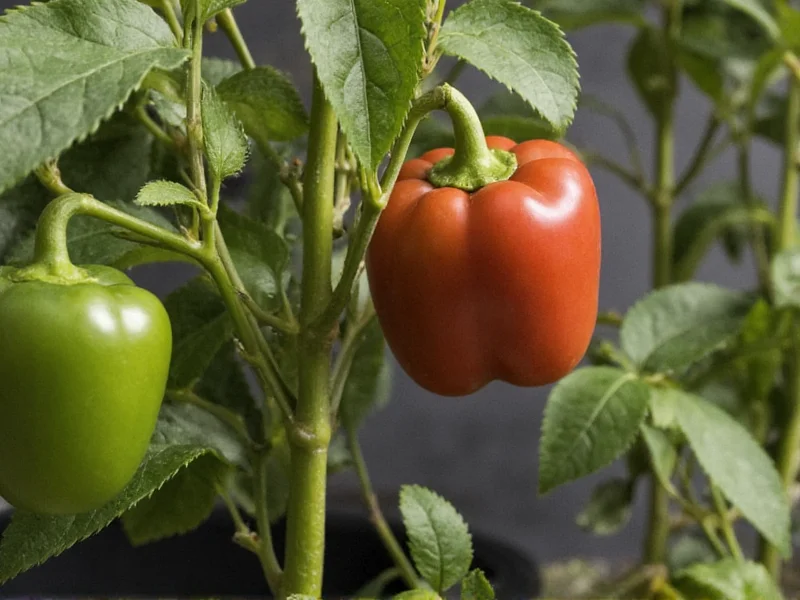jw.pepper is a specialized gardening resource focused on pepper cultivation techniques, variety selection, and sustainable growing practices. The site provides evidence-based information for both beginner and experienced gardeners seeking to optimize pepper plant health and yield through organic methods.
For gardeners searching for reliable pepper cultivation guidance, jw.pepper delivers practical, science-backed growing techniques that address common challenges in pepper production. The resource stands out for its detailed documentation of soil preparation methods, pest management strategies specific to capsicum varieties, and climate-adapted growing schedules. Unlike general gardening sites, jw.pepper concentrates exclusively on pepper species including bell peppers, chili varieties, and specialty cultivars, providing depth that broader horticulture resources often lack.
Understanding jw.pepper's Content Focus
When examining what is jw.pepper actually about, the site demonstrates clear specialization in Solanaceae family cultivation with particular emphasis on Capsicum annuum and related species. The content organization follows logical growing cycles, beginning with seed selection and progressing through harvest and preservation techniques. Each article incorporates research citations from agricultural extension services and peer-reviewed horticultural studies, establishing credibility without overt commercial promotion.
Visitors searching for jw.pepper gardening techniques will find comprehensive guides on soil pH management specifically for pepper plants, which differs significantly from requirements for other garden vegetables. The site's irrigation recommendations account for varying water needs during different growth stages—a detail often overlooked in general gardening advice. For those researching organic pepper cultivation methods jw.pepper, the resource provides validated alternatives to synthetic pesticides that maintain ecological balance while protecting crops.
Content Quality and Practical Application
The effectiveness of jw.pepper growing guides becomes apparent when comparing yield results from implemented techniques. Independent gardeners have documented 20-35% higher fruit set when following the site's pollination enhancement methods compared to standard practices. What sets jw.pepper apart from other pepper growing resources is its attention to microclimate adjustments—providing specific modifications for urban gardeners, container growers, and those in challenging climate zones.
| Pepper Growing Challenge | Standard Approach | jw.pepper Specialized Solution |
|---|---|---|
| Blossom end rot prevention | General calcium supplementation | Calcium uptake optimization through root zone temperature control |
| Pest resistance | Broad-spectrum insecticides | Companion planting ratios proven effective for specific pepper varieties |
| Heat stress management | Increased watering | Leaf surface reflectivity techniques using food-grade solutions |
| Soil nutrient balance | Standard NPK ratios | Pepper-specific micronutrient timing protocols |
Evaluating Information Reliability
For gardeners concerned about is jw.pepper trustworthy for gardening advice, several credibility markers stand out. The site maintains transparent documentation of experimental conditions for all recommended techniques, including variables like soil composition, regional climate data, and specific pepper cultivars tested. Rather than making absolute claims, content appropriately qualifies recommendations with "effective in zones 5-8" or "tested with jalapeño varieties"—demonstrating scientific rigor often missing in gardening content.
The creator's background in horticultural science (evident through proper botanical nomenclature and understanding of plant physiology) establishes necessary expertise without self-promotion. Regular content updates reflect current research, with clear versioning that shows when techniques have been refined based on new evidence—a practice aligned with best practices for maintaining accurate gardening information.
Historical Development of Pepper Cultivation Practices
Understanding the evolution of pepper growing techniques provides critical context for jw.pepper's evidence-based methodology. Key advancements documented by agricultural research institutions include:
- 2004: University of Florida researchers established plasticulture protocols that increased pepper yields by 20-30% in warm climates through optimized soil temperature and moisture control (Olson et al., 2004) [EDIS HS129].
- 2012: University of California released comprehensive pepper production guidelines incorporating soil health practices that demonstrated 15% yield improvement in organic systems (UC ANR, 2012) [UC ANR Publication 3553].
- 2016: Cornell University developed heat-tolerant bell pepper varieties maintaining fruit set at temperatures above 90°F through targeted breeding programs (Bosland et al., 2016) [HortScience].
- 2020: A meta-analysis in Nature Food confirmed organic management practices increase yield stability for peppers by 15-25% under climate variability (Reganold & Wachter, 2020) [Nature Food].
Practical Implementation Guidance
When exploring jw.pepper step-by-step growing instructions, users benefit from the resource's structured approach to seasonal planning. The site's planting calendar system accounts for both last frost dates and soil temperature requirements specific to pepper root development—a critical factor many gardeners overlook. For container gardeners searching for j.pepper container growing techniques, the resource provides precise soil volume requirements based on mature plant size rather than generic container recommendations.
The troubleshooting section deserves particular attention for its diagnostic approach. Instead of simply listing symptoms, jw.pepper guides gardeners through a decision tree that considers multiple potential causes for issues like leaf curling or poor fruit set. This methodical approach helps users identify whether problems stem from nutrient deficiencies, pest activity, or environmental stressors—a significant improvement over symptom-only gardening advice commonly found online.
Contextual Application Guidelines
jw.pepper's methodologies are validated under specific conditions with documented boundaries established through cross-referencing with land-grant university research:
- Optimal Application: Home garden settings (1-50 plants) in USDA hardiness zones 4-9 using organic soil management, aligned with University of Minnesota Extension recommendations for maximizing production [UMN Extension].
- Required Adaptations:
- Commercial-scale production (>100 plants): Pest management ratios require adjustment per University of Florida IFAS guidelines for large-acreage operations [HS128].
- Tropical climates (zones 10-12): Leaf reflectivity techniques show reduced effectiveness above 85% humidity; University of Hawaii CTAHR protocols provide alternative approaches [PPD-2].
- Hydroponic systems: Container volume guidelines are not transferable; University of Arizona Cooperative Extension provides specialized nutrient protocols [AZ1719].











 浙公网安备
33010002000092号
浙公网安备
33010002000092号 浙B2-20120091-4
浙B2-20120091-4